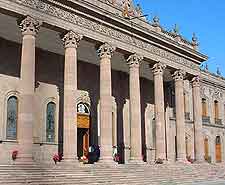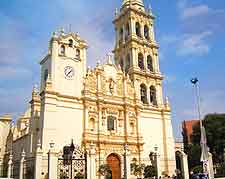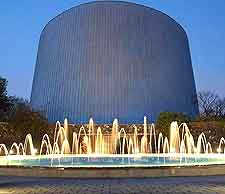Monterrey History Facts and Timeline
(Monterrey, Nuevo Leon, Mexico)

One of the largest and most Americanised cities in Mexico, Monterrey is considered to be the commercial heart of the north.
Despite its modern infrastructure and international connections, it has a lot to offer travellers who are interested in Monterrey history. Little is known about the area before its founding in 1596, but a semi-nomadic group known as the Chichimecas was said to occupy the lands.
Spanish Colonisation
During the 16th century, two Spanish expeditions unsuccessfully tried to establish settlements in the area now occupied by Monterrey. Attacks from the indigenous population meant that the first settlers had to flee, leaving the region known as Nuevo Leon, which was abandoned for a period of eight years.
A third attempt by several families fronted by Diego de Montemayor, a Spanish army officer and explorer, was much more successful. The city was founded on the land that is now occupied by the Mexican History Museum (Museo de Historia Mexicana). This museum is a must-see for anyone interested in Monterrey as well as national history, with exhibits chronicling times as far back as the Aztecs and the Mayans.

19th Century Independence
Monterrey remained on the small side during Spanish colonial times, but was still a useful trading post between bigger Mexican towns and the USA. All that changed after the Mexican War of Independence, which only allowed Monterrey to strengthen its ties with Europe, the USA and the Mexican capital. However, its economic growth was not smooth and the 19th century was a turbulent time in history.
Despite US invasions and other civil conflicts, Monterrey remained the capital of Nuevo Leon. Some of the fiercest battles took place in the Old Town (Barrio Antiguo), which is now home to the neoclassical Governor's Palace and the Macroplaza, the second-biggest city square in the world.

Monterrey - An Industrial Powerhouse
In 1900, a huge ironworks was constructed in the city and was considered to be the first of its kind in Latin America. Fundidora Park now stands on the site and uses its old foundry buildings to great effect. The park manages to seamlessly fuse the old and the new, with a hotel, a museum and a cinema set among natural attractions.
The ironworks were followed by a number of mills, whose chimneystacks dominated the Monterrey skyline for many years. In fact, the city was known among many as the '
Pittsburgh of Mexico'.
These economic boom times produced a more affluent populace, many of whom moved out to Colonia Obispado, an upmarket district surrounding the Cerro del Obispado hillside. The hill itself is a historical site featuring a small museum and wonderful views. However, visitors will enjoy wandering around Colonia Obispado too, with its old mansions and colonial-era buildings.
On the International Stage
In 1986, Mexico staged the FIFA World Cup, with several important games taking place in Monterrey. This was a noteworthy year in the sporting history of both Monterrey and the country.
The city has more recently hosted UN conferences and presidential summits, further cementing its position as a global metropolis. Even though much of the heavy industry has long since departed the city, some 25 percent of Mexican steel is still produced here, as well as much of the country's glass and beer.
 One of the largest and most Americanised cities in Mexico, Monterrey is considered to be the commercial heart of the north.
One of the largest and most Americanised cities in Mexico, Monterrey is considered to be the commercial heart of the north.
